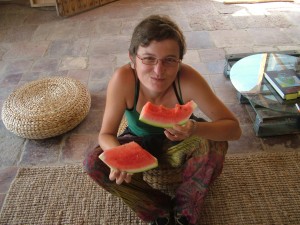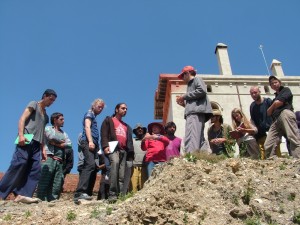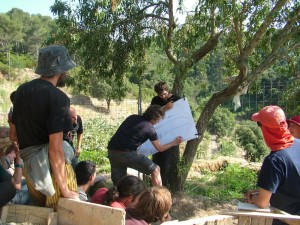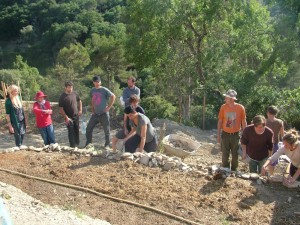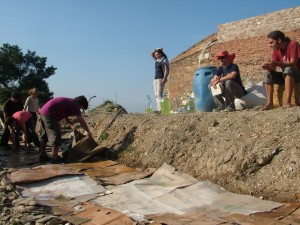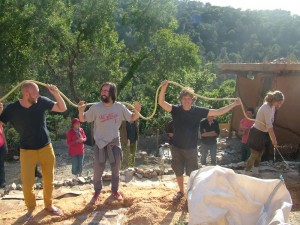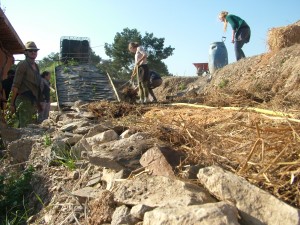“If you go to the vegetable garden and your slippers get wet is that your vegetable garden is too far” – Alessandro Ardovini quoting someone
Today has been a hands-on experience day and the group enjoyed it!
The first part was about the world climatic biozones. We had a little introduction about the physical aspects of the differences between the biozones of the planet.
This introduction allowed us to understand that all of the plants, animals, soils and techniques were evolving and living together. It lead us to realize that before acting on a land we have to be conscious of all of these elements and research and use old or local technologies, materials and species in order to make sure we are minimizing the possible damages on the population or the environment. The interrelationship will be greater than expected.
We then had a introduction to different techniques on how to manage arid landscapes and wet tropics.
After this talks Rosemary and Alfred began to explain the zone method design. This method is a way to manage the energy, the nutrients and the permanence of the land you are working on.
Zone 0 – home
The ethic in this zone is that the all structures should be environmental living zones, build to preserve nonrenewable resources, create zero waste, use few external inputs, las long, be beautiful and comfortable.
Principles:
- Admit and store suns energy when needed and remove and exclude it when not needed
- Generate designs wich reflect simplicity, economy and resource recycling.
- Design to related space and function
- Design or retrofit your house yourself
- Design and build houses which meet their own needs for renewable energy, food, waste, processing and that use only natural light during the day
Siting the house:
- Climate: seek cooling in hot climates…
- Topography: more than 18 degree should be forested (no house), hill can block winds and create thermal zone…
- Water: springs, tanks, dams, rainwater…
- Soil: drainage, suitability for building…
- Access: erosion potential, water harverst potential, escape…
- Vegetation: leave native vegetation, don’t cut without plan…
Avoid:
- Sick houses: build tight, ventilate right
- Vulnerable house: each function dependent on 1 source
- Consumer junkies
Zone 1 – Kitchen Garden
Its the place where you have to grow as much food as possible, it must be very intensive and productive, is where we recycle the wastes of Zone O. It has to be non polluting and reduce the foot miles and our foot print. The aims are for it to be permanent, annual, productive and recycling.
Is where we plant veggies, herbs, small fruit trees because is a place we visit often.
Criteria of garden:
- provides 80% of our food
- less than 50 m from house
- SE or NE (east is the mild aspect)
After this very theoretical morning we split in groups of 5 and began to design propositions for Valldaura’s landscape. After realizing we were only beginners it was time to get our hands dirty. Rosemary lead us for the creation of a Permaculture Blitz design on one of the terraces that we hadn’t been using yet.
We did use the technique of Sheet Gardening which consists in creating a garden from scratch by covering completely its bare ground.
The steps were:
- Edging: rocks, tiles
- Wet the soil
- Add dolomite on ground if contaminated
- Add fresh organic matter
- Lay wet cardboard (cut light out) on top of the organic matter
- Design paths with sawdust (thick).
- And then for the beds put hay then compost and finally straw

